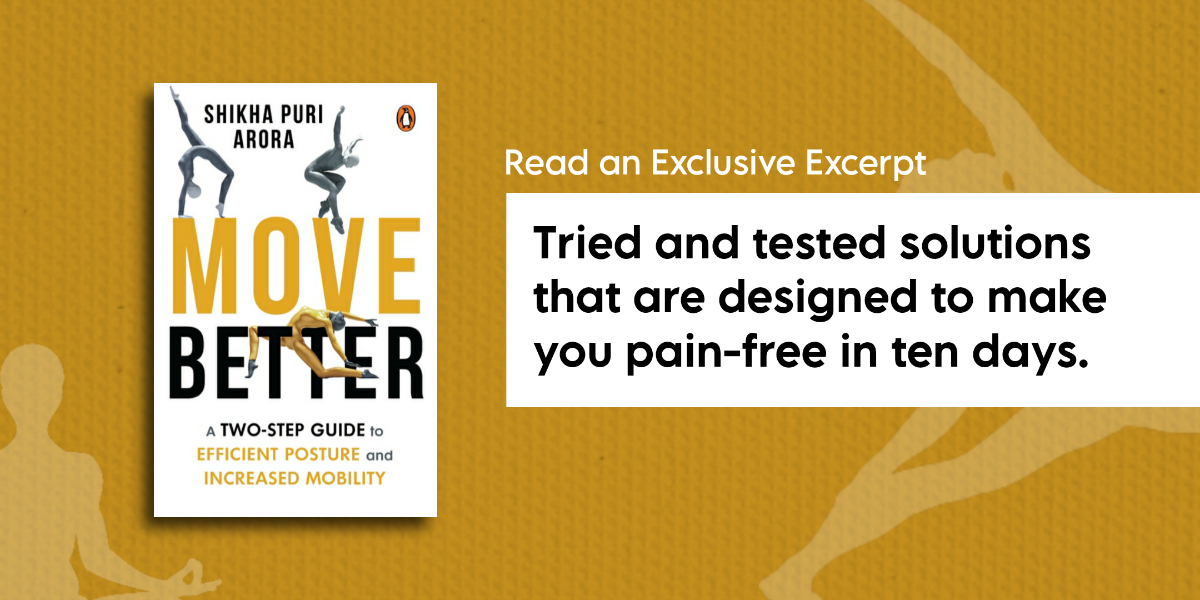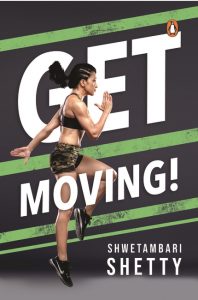Ever feel the ache from sitting too much at your desk? Shikha Puri Arora has the game plan you need in her latest book, Move Better. This book isn’t just about sitting less; it’s your ticket to feeling awesome every day and staying away from ache-y postures and limited mobility.
Read this exclusive excerpt to learn simple tricks that can make sitting at your desk a breeze, keeping discomfort away and bringing more pep to your step.
Say goodbye to desk discomfort and hello to a healthier, happier you!
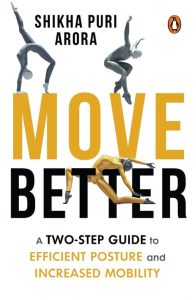
***
A comprehensive approach to employee quality of life needs to be adopted so that they can deliver top-notch performance while thinking of their long-term well-being. Most approaches ignore the following factors:
• Most individuals are sedentary twenty-three hours a day and move just an hour. This makes them struggle with the basics of human function and health.
• A deskbound individual has limited range of motion in the joints and stiff muscles that are the consequence of inadequate hydration and poor posture. Efforts to increase mobility without addressing the causes are of little use.
• Stored muscle tension and emotions that are not removed from the physical body cause breathing limitations, which lead to anxiety and nervous tension. The state of the body detracts from the value of the courses undertaken to improve mental health. Troubleshooting the physical body thus becomes a pre-requisite for mental health.
• Basic movement mechanics of spinal stability, sitting, bending, standing, walking are untrained, thus neutralizing any benefit derived from fitness activities.
General fitness and corporate programmes don’t provide solutions to these causes and their effects. Employee welfare can be addressed only by including all these above aspects into a programme that focuses on the basics of health and well-being.
These techniques must be used by deskbound individuals to add mobility solutions to their daily life. Besides combating pain, the solutions provided make the brain alert and promote relaxation in the body. None of these divert the already preoccupied mind while working and can be used every day to increase blood circulation. These self-care techniques counter the effects of daily life stress and come with many benefits.

• Sitting with a wedge cushion keeps the spine erect and brain alert. The spine can stay erect longer without a back support and feel no fatigue. This is half the battle won as mobility isn’t compromised.
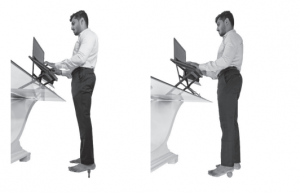
• Using a stick/rolling pin or ball under the foot at a standing desk prevents the fatigue (from standing), enhances posture and increases blood circulation. This is a position that encourages brain activity, improves concentration and creativity, and charges up the brain with ideas, increasing output. This is also a great way to increase NEAT calories for those individuals who have excessive sedentary hours.
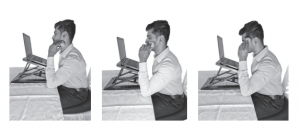
• Rubbing a myofascial ball along the sides of the neck, jaw and head is an anxiety and stress-buster that increases circulation in the head and eyes. The entire action is inconspicuous!
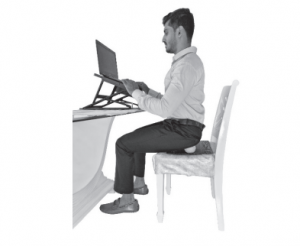
• Myofascial release for the glutes keeps the hip mobile. Simply place a hard to medium ball under the buttocks. To prevent the ball from sinking into your chair you can use a hard placemat under the ball. This technique also massages the glutes and increases blood circulation in the area.

• Myofascial release for hamstrings ensures you will never have to experience back pain because of sitting! Imagine the magic of lengthening your hamstrings while you sit. For details on the technique, refer to page 205.

• Wrist, palm and forearm release with a ball not only improves mobility in the wrist, fingers and forearm, but it counters the stress on the palms, fingers, wrist and forearms caused by using devices.
Image 1: Place a ball under the wrist with your palms facing upwards. Place the other hand on top to put a gentle pressure and mobilize the wrist by moving it up and down. This instantly gives relief from wrist pain.
Image 2: While standing, lean forward and put your body weight on a medium to hard ball placed under your palms. The pressure will automatically make your palm and fingers feel light. Those with carpal tunnel will get some ease from this simple release technique.
Image 3: Place a hard to medium ball on one forearm and dig into various areas of the forearm. This gives instantly relief for those suffering from tennis elbow.
***
Get your copy of Move Better by Shikha Puri Arora wherever books are sold







